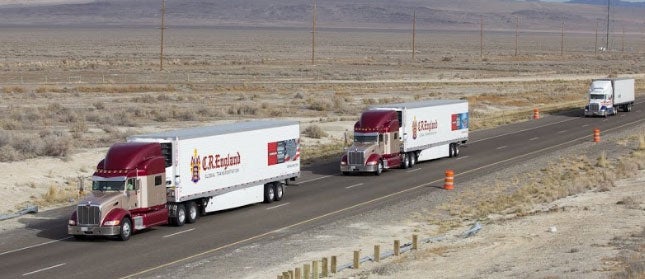
The average age of a trucker in the U.S. stands at 49, which is noticeably higher than the average worker’s age of 42. The market grapples with the weight of over 48,000 trucker job vacancies that it is desperately trying to fill. Though there are some makeshift solutions that are acceptable in the short term, the plan ultimately should be to make trucking attractive to the millennials and young drivers looking out for prospective jobs.
Injecting technology into the age-old practices existing in the market is vital to giving the industry a facelift. Millennials are tech-savvy more often than not, and providing them with tools that could ease the life of a trucking job could empower a lot more to join the system.
But then, the elephant in the room needs to be addressed as well. Innovations like autonomous driving trucks and platooning technologies are gaining steam, which also brings into question the role of the truck driver in the future. Though such technologies look to be ominous to the fate of driving jobs, it should not be an immediate cause for concern.
But the general trend, if to be believed – is assuaging. Ever since the Industrial Revolution, people have been skeptical and borderline resistant to change ushered through technology. Nonetheless, the latter has always helped employ more people, though job specifications have evolved over time. Similarly, though the impact looks to potentially strain the livelihoods of the truck drivers, it necessarily does not.
Automated trucks could fundamentally change the driving job, but it would help drivers who are skilled across different verticals, say for example the ones who are a hybrid between mechanics and drivers. The technology though, is more about improving conditions and safety of drivers on the road, than about replacing them. Analysts believe that driver-assisted trucks would be in the scope of the next decade, rather than completely automated trucking systems.
With the advent of fleet platooning technology, it is now evident that the millennials looking to work in the driving sector would require maneuvering fleet convoys more like an airline pilot on auto-pilot, than regular drivers. Also, training young drivers on logistics operations could help in diversifying roles and improving payscale.
If not for the general inhibition towards autonomous driving systems, the drivers have a lot to thank technology for. Automated driving systems can considerably improve the efficiency of fleet delivery, help tired drivers on the road by letting them get rest, reduce accidents due to driver negligence, and also understand vital health signs of trucks to avoid breakdowns.
Platooning technology helps fleet companies to increase their saving on fuel costs. Studies show that when trailers follow the platooning technique, there could be a 25% reduction in drag which translates to 5-15% decrease in fuel spending. Companies like Daimler and Peloton are investing millions of dollars into truck platooning technology, which could be the norm in a decade.
Bottom line, technology is here to stay, and young millennials would have to adapt to the changes faster than their predecessors did. But all is not lost – automated driving systems come under strict vetting, and thus, even the smallest of errors would be blown up in the mainstream media. The only feasible solution right now is for drivers to be provided with assistive technology, which would not trivialize truckers but rather make their job easier.
Stay up-to-date with the latest commentary and insights on FreightTech and the impact to the markets by subscribing.
